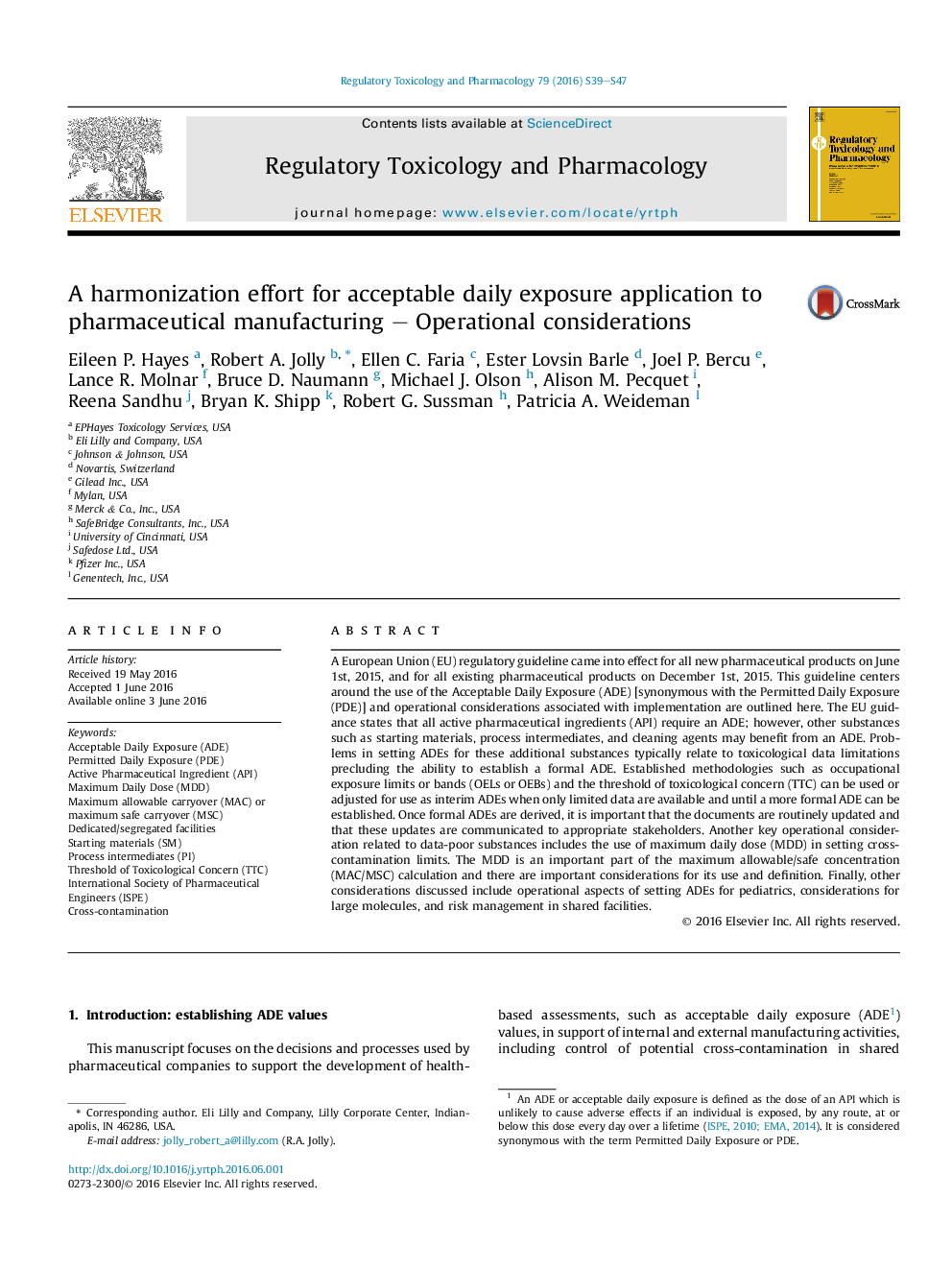| کد مقاله | کد نشریه | سال انتشار | مقاله انگلیسی | نسخه تمام متن |
|---|---|---|---|---|
| 2592279 | 1131964 | 2016 | 9 صفحه PDF | دانلود رایگان |
• New regulations use ADEs to minimize cross contamination of APIs.
• APIs require ADEs while SMs, PIs and cleaning agents may need them.
• Interim ADEs can help implementation until formal ADEs can be developed.
• Principles for determining a MDD are discussed in the context of deriving the MAC/MSC.
A European Union (EU) regulatory guideline came into effect for all new pharmaceutical products on June 1st, 2015, and for all existing pharmaceutical products on December 1st, 2015. This guideline centers around the use of the Acceptable Daily Exposure (ADE) [synonymous with the Permitted Daily Exposure (PDE)] and operational considerations associated with implementation are outlined here. The EU guidance states that all active pharmaceutical ingredients (API) require an ADE; however, other substances such as starting materials, process intermediates, and cleaning agents may benefit from an ADE. Problems in setting ADEs for these additional substances typically relate to toxicological data limitations precluding the ability to establish a formal ADE. Established methodologies such as occupational exposure limits or bands (OELs or OEBs) and the threshold of toxicological concern (TTC) can be used or adjusted for use as interim ADEs when only limited data are available and until a more formal ADE can be established. Once formal ADEs are derived, it is important that the documents are routinely updated and that these updates are communicated to appropriate stakeholders. Another key operational consideration related to data-poor substances includes the use of maximum daily dose (MDD) in setting cross-contamination limits. The MDD is an important part of the maximum allowable/safe concentration (MAC/MSC) calculation and there are important considerations for its use and definition. Finally, other considerations discussed include operational aspects of setting ADEs for pediatrics, considerations for large molecules, and risk management in shared facilities.
Journal: Regulatory Toxicology and Pharmacology - Volume 79, Supplement 1, 15 August 2016, Pages S39–S47
